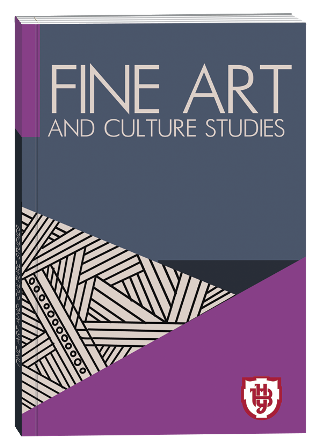THE ROLE OF WORLDVIEW CULTURE AND EDUCATION IN THE CREATIVE SELF-REALISATION OF THE INDIVIDUAL
DOI:
https://doi.org/10.32782/facs-2024-5-28Keywords:
person, personality, worldview, worldview culture, worldview education, worldview pluralism, critical thinking, spirituality, system of values, creativity, self-knowledge, self-expression, self-affirmation, self-realization, lifecreation, human creativityAbstract
This article is devoted to the problem of human-creating role of worldview culture and education in the process of development and formation of personality. The article reveals the essence and content of such concepts as “worldview”, “worldview culture”, “worldview education”, which are determinants of personal self-awareness, the basis of human self-determination in the world. The complexity of the process of formation of worldview culture of the individual is noted in the article. The main ways of its formation are also determined. It is emphasized that spirituality is the basis of human life and formation of the culture of the individual, that is, with the discovery and nurture of spirituality begins the process of self-knowledge, creative attitude to themselves. It is also stated in the article that the personal value system plays the role of an internal integrator, the inner core of culture. Worldview education and worldview culture, based on cultural wealth of society and universal values, is the potential of personal culture, which is designed to provide spiritual and emotional comfort of the individual, helps to meet the need for creative self-realization, which is an important characteristic of the individual. The aim of this article is to define and study the role of the creative potential of worldview culture and education in the process of formation and development of the individual. Scientific novelty. Worldview culture is studied as always correct, though a kind of mirror of the soul of the individual. It is substantiated and emphasized that being characterized as multidirectional, concentrating the main, defining guidelines of creative activity, worldview culture determines in general terms the deployment of intellectual and spiritual processes. It is defined that common worldview attitudes function as the most important intellectual catalysts for the assimilation of the most socially and culturally significant achievements. In conclusion, it is noted that creativity is a principle of human life. Everyone who seeks to know “his or her own way” in all its dimensions, to master the art of being oneself, must consciously take the position of a creative attitude to life. It is emphasized that the foundation of creativity in life is the freedom of subjective human activity. The source of activity is needs, which under ideal conditions should be freely realized, but their satisfaction occurs through overcoming certain circumstances, contradictions and oppositions, which often serve as an additional stimulus to the actualization of the creative potential of the individual. Thus, creative potential in a broad sense plays the role of one of the main dynamic determinants that influence the direction of the process of personal development. One of the main and determining factors of this process is worldview culture and education.
References
Арцишевська М. Р., Арцишевський Р. А. Інтеграція змісту освіти: Моногр. Луцьк: «Вежа» Волин. нац. ун-ту ім. Лесі Українки, 2007. С. 127–128.
Мистецтво життєтворчості особистості: наук.-мет. посібник: Уч. (Ред. Рада: В. Н. Доній (голова), Г. М. Несен (заст. голови), Л. В. Сохань, І. Г. Єрмаков (керівники авторського колективу) та ін. К., 1997. ч. 1: Теорія і технологія життєтворчості. 392 с.
Никонорова Л. В. Суспільно-практична сутність світоглядної свідомості. Філософська думка.1988. № 1. С. 36.
Світоглядні орієнтири мисленнєвої культури. К.: Наук. думка, 1993. 166 с.
Табачковський В. Г. Формування світоглядної культури молоді. К.: Наукова думка, 1990. С. 164, 183–184, 201, 210, 213, 235.
Шинкарук В. І., Яценко О. І. Гуманізм діалектико-матеріалістичного мислення. К.: Політвидав, 1984. С. 7, 163.







